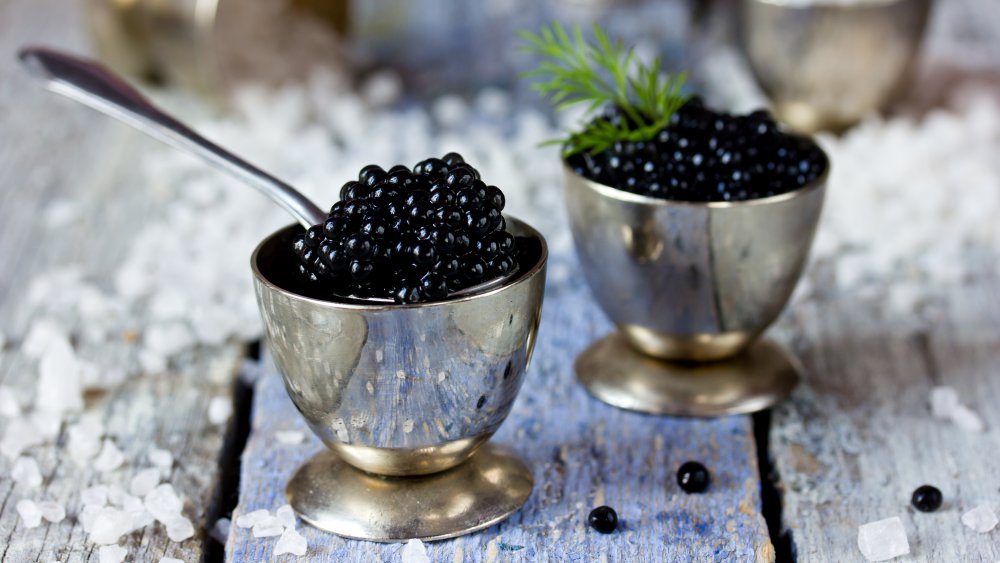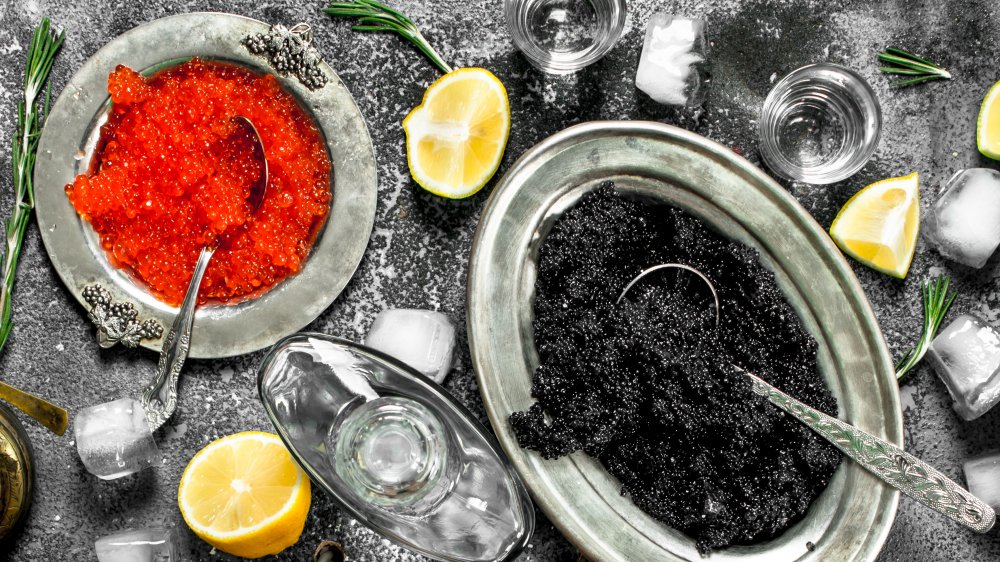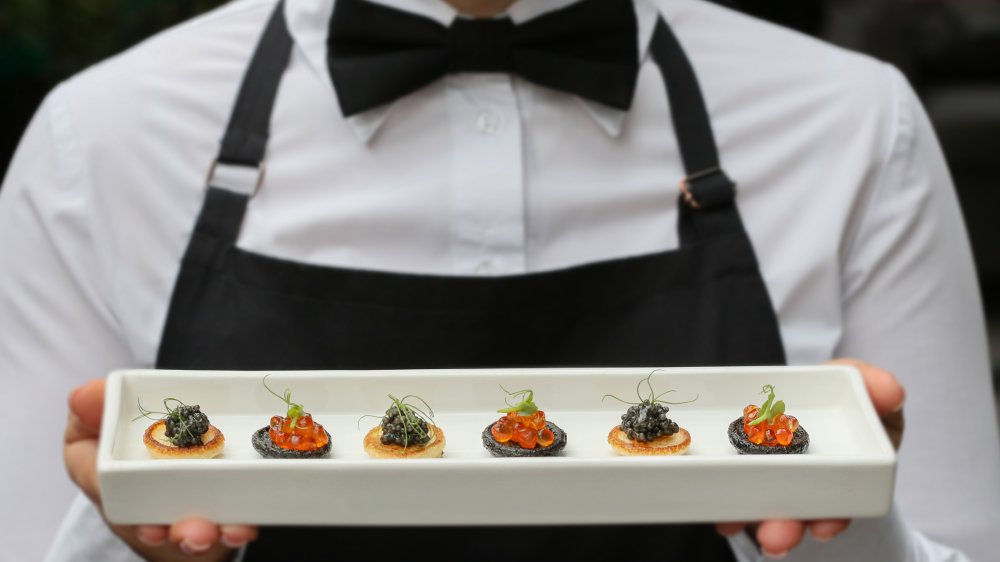Here's How To Buy Caviar Without Breaking The Bank
Caviar was once exclusive to royalty, yet in the early 19th century when America was just a baby, this luxury food was served at saloons during free lunches because its salty flavor encouraged drinking and increased profits (via The Spruce Eats). But the consumption of sturgeon dates back well past that part of U.S. history. In fact, Middle Eastern and Eastern European diets have included the delicacy, dating back 250 million years to prehistoric times.
It is important to note that caviar is cured roe (also known as fish eggs) that comes from sturgeon. Roe can come from a lot of different fish — salmon, trout, whitefish — but to be called caviar, the roe must come from sturgeon. Beluga, osetra, and sevruga caviar from the Caspian Sea are the best of the best and can cost hundreds of dollars per kilo, which begs the question, is there such a thing as affordable or inexpensive caviar that tastes good (via Martha Stewart)? And how do you tell a good caviar from a bad caviar before you hand over your hard-earned dough?
Caviars that won't break your budget
Guy Meikle, chef and owner of Heritage Restaurant and Caviar Bar in Chicago, told GQ that while some caviar doesn't need refrigeration, this is also the caviar that is going to be higher in salt, which is generally indicative of an inferior product. He suggests bypassing these and heading straight to the refrigerated sturgeon section of your market. Meikle also told GQ to look for these little fishy eggs in clear jars so you can see what's inside. He cautions that you don't want the eggs to look muddy, but rather there should be a clear definition between the eggs. For the budget-conscious caviar consumer, Meikle recommends Louisiana bowfin, American spoonbill, or Illinois hackleback roe.
Hackleback roe is dark and firm with a mild flavor and harvested from the smallest sturgeon (via Caviarstar). Bowfin is also known as Cajun Caviar and doesn't come from sturgeon, but its flavor is robust and the eggs turn red when cooked (via Brownetrading). Spoonbill or paddlefish caviar is described as having a strong flavor and is generally not suggested for first-time caviar tasters (via Markys). The price range for one ounce (or around 28 grams) can range anywhere from $13 to $25.
Tips for enjoying your inexpensive caviar
Elliott Myer, Executive Leader of Merchandising for Whole Foods Markets Global Seafood, told Martha Stewart that if the grocery store staff cannot tell you where the roe came from, don't buy it. Additionally, you may want to skip dyed capelin caviar. This roe comes from the smelt fish family and is generally served on top of sushi. It is red before it is dyed and it can bleed blue — and unless you're a New York Giants fan, that might not be cool.
Whatever caviar you wind up buying, make certain you allow it to sit at room temperature for five to 10 minutes before you serve it. The Spruce Eats says that it is a myth you aren't supposed to serve caviar off of metal spoons, noting it is sold in metal containers. However, they also note that there is a stigma attached to using metal spoons and your guests might think the caviar is inferior if you do. Traditional caviar spoons are made out of mother of pearl, but you can also use plastic.


